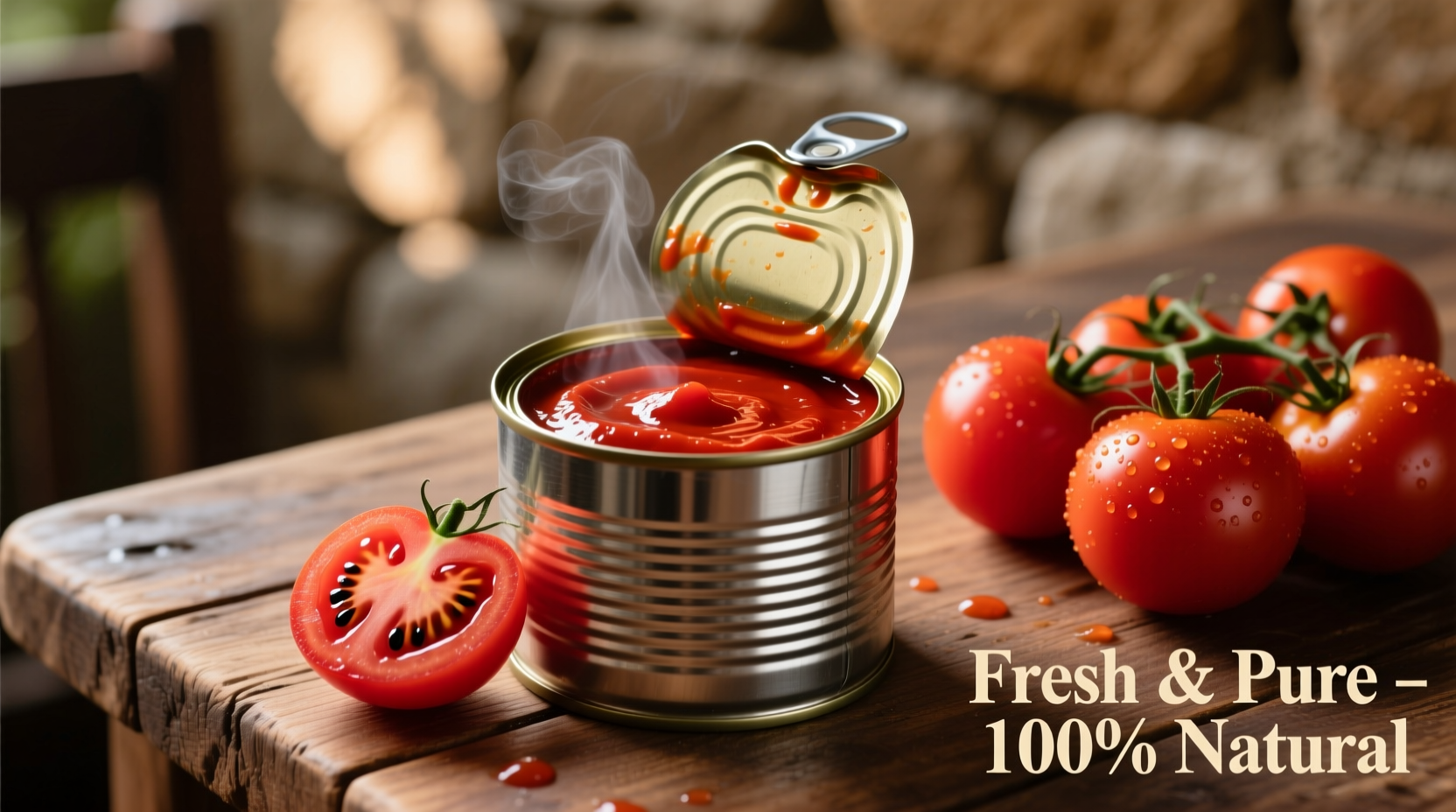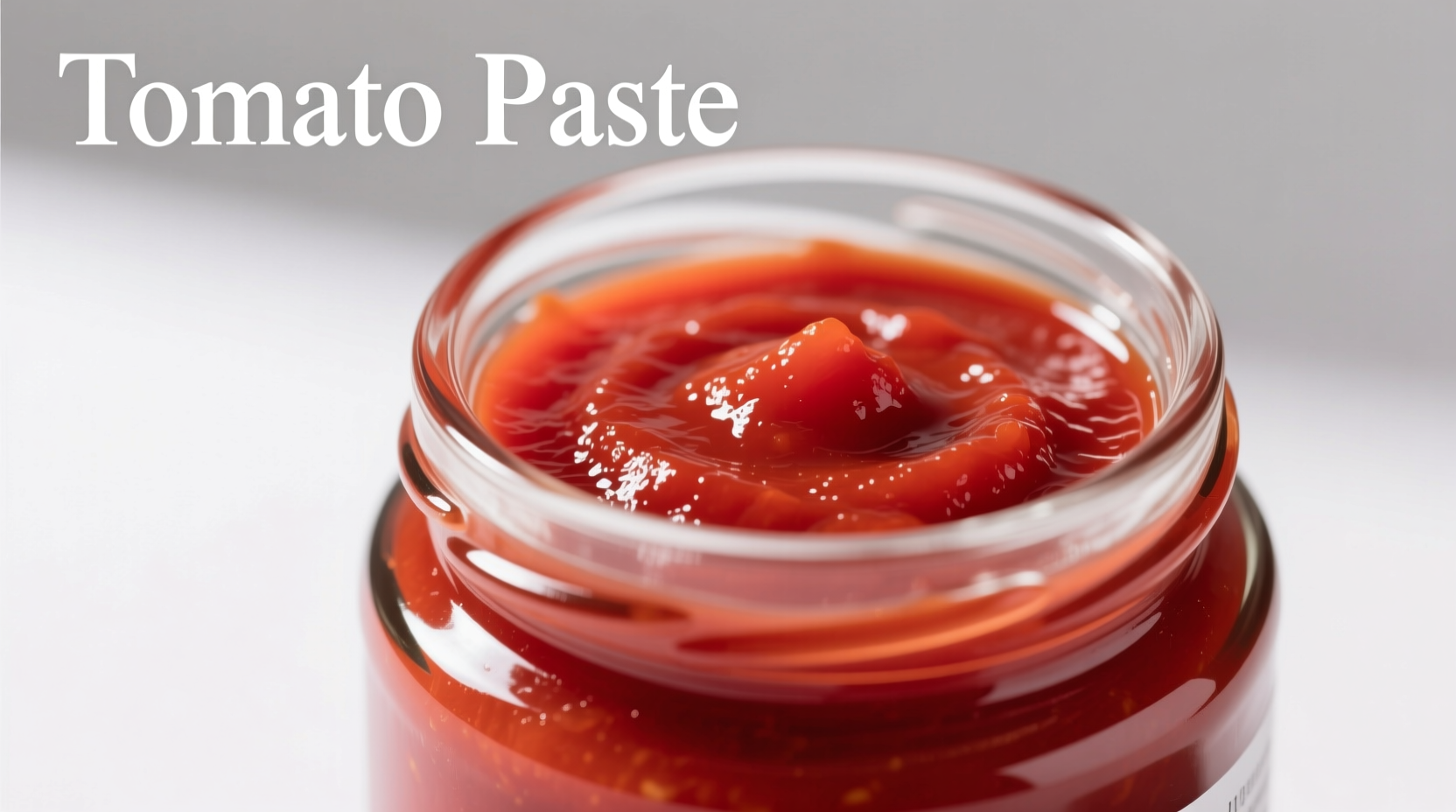Understanding Tomato Paste: More Than Just Concentrated Tomatoes
When you reach for that small can in your pantry, you're accessing a culinary powerhouse developed through centuries of food preservation techniques. Unlike fresh tomatoes with 95% water content, tomato paste undergoes a meticulous reduction process that transforms its chemical composition, creating deeper flavor compounds through caramelization and Maillard reactions.
How Tomato Paste Transforms From Vine to Pantry Staple
The journey begins with ripe tomatoes harvested at peak season, typically varieties like Roma with lower water content. These undergo a precise three-stage process:
- Initial cooking: Tomatoes are simmered for 2-3 hours to break down cell walls
- Concentration: Water content is reduced through evaporation until solids reach 7-12%
- Final reduction: Further cooking concentrates solids to 24-30% for commercial paste
This extended cooking develops complex flavor compounds like glutamic acid (umami) and 5'-guanylate that don't exist in fresh tomatoes. The process also increases lycopene bioavailability by up to 4-fold compared to raw tomatoes, according to research published in the Journal of Agricultural and Food Chemistry.

Tomato Paste vs. Similar Products: Critical Differences
| Product | Solids Content | Added Ingredients | Primary Culinary Role |
|---|---|---|---|
| Tomato paste | 24-30% | None | Flavor foundation, color enhancer |
| Tomato puree | 8-24% | Occasionally citric acid | Base for sauces and soups |
| Tomato sauce | 5-8% | Herbs, seasonings, oil | Ready-to-use sauce component |
This distinction matters because substituting these products affects both flavor concentration and liquid balance in recipes. Professional chefs consistently emphasize that tomato paste's higher solids content creates richer flavor development when properly caramelized.
Mastering Tomato Paste in Your Cooking
The secret to unlocking tomato paste's potential lies in the fond development technique. When added to hot oil, the concentrated sugars and proteins undergo caramelization that creates complex flavor compounds:
- For Mediterranean dishes: Cook paste 3-5 minutes until brick-red and slightly separated from oil
- For Mexican moles: Toast paste in comal until darkened for smoky depth
- For Indian curries: Bloom in ghee with spices to create flavor base
Undercooked paste retains a raw, acidic flavor that can throw off entire dishes. The USDA's Food Safety and Inspection Service confirms proper cooking eliminates potential microbial concerns in commercially canned products.
Storage Guidelines and Shelf Life Boundaries
Understanding proper storage prevents waste and maintains quality. Once opened, tomato paste has specific limitations:
- Refrigerated: 5-7 days in airtight container (USDA FoodKeeper app recommendation)
- Freezer: Up to 6 months when portioned in ice cube trays
- Unopened cans: 18-24 months in cool, dry place
Discard if you notice mold, off-odors, or significant darkening beyond deep red. The National Center for Home Food Preservation warns against storing opened paste in the original can due to potential metal leaching.
Nutritional Profile Per 2-Tablespoon Serving
According to USDA FoodData Central (entry #11549), tomato paste provides:
- 30 calories
- 690% of daily vitamin C
- 40% of daily vitamin K
- Significant lycopene (antioxidant)
- Naturally low sodium (20mg)
The concentration process increases nutrient density while maintaining the naturally low-calorie profile of tomatoes. Research from the Harvard T.H. Chan School of Public Health confirms processed tomato products like paste provide more bioavailable lycopene than fresh tomatoes.
Avoiding Common Tomato Paste Mistakes
Even experienced cooks make these critical errors:
- Skipping the bloom step: Adding paste directly to liquids prevents flavor development
- Using expired product: Flavor degrades significantly after 6 months opened
- Substituting with sauce: Creates watery, under-seasoned results
- Storing in original can: Causes metallic taste and potential contamination
Professional chefs recommend freezing leftover paste in tablespoon portions for precise recipe use. This technique maintains quality while reducing waste - a practice documented in the Culinary Institute of America's professional cooking guidelines.











 浙公网安备
33010002000092号
浙公网安备
33010002000092号 浙B2-20120091-4
浙B2-20120091-4